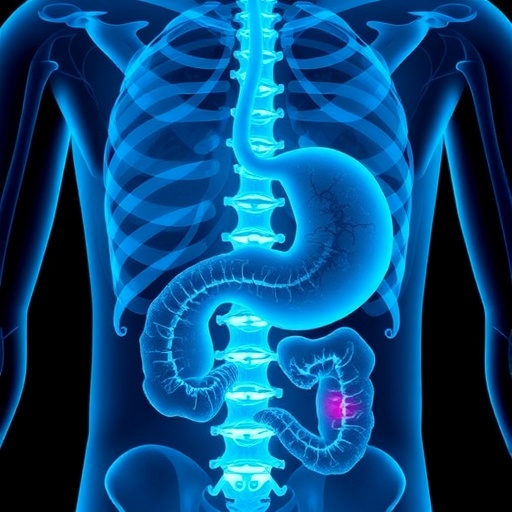An advance in liquid biopsies
A new method of determining the sequence of molecules in DNA can be used to detect small fragments of cancerous genetic material in blood samples from lung cancer patients with a high degree of accuracy, according to new research published in the leading cancer journal Annals of Oncology [1] today (Wednesday).
Results from analyses of so-called “liquid biopsies” in patients with non-small cell lung cancer (NSCLC) show that it is possible to identify the genetic variants that are either driving the cancer or making it resistant to treatment. This offers the potential for doctors to use liquid biopsies to help them choose the best treatment for patients based on the genetic make-up of their tumours.
Researchers in the USA used a method of analysing patient blood samples called “ultra-deep next-generation sequencing”. This involves reading the DNA fragments that have been released by the tumours into the blood stream – known as cell-free DNA (cfDNA) – an average of 50,000 times to ensure the greatest accuracy in detecting variants from any of 37 genes commonly involved in lung cancer.
The proportion of cfDNA from tumours is very small compared to cfDNA from non-cancerous cells in blood, and so it is important to be able to detect the faint signals from tumour cfDNA and distinguish between these and the overwhelming background noise from everything else. To do this, the patients’ white blood cells were also sequenced and used to filter out non-cancer signals from the bone marrow, a process called “clonal haematopoiesis filtering”. The information from the ultra-deep next-generation sequencing [2] was fed into a newly-developed computer algorithm that used machine learning to sift the ‘wheat’ from the ‘chaff’ [3].
The researchers from Memorial Sloan Kettering Cancer Center (MSK), New York, MD Anderson Cancer Center, Texas, and Dana-Farber Cancer Institute, Boston, collected blood samples from 127 patients with newly diagnosed advanced NSCLC that had spread (metastasised) to other parts of the body or who had recurrent metastases. There were three groups of patients: 1) 91 in whom genetic mutations driving the cancer or making it resistant to treatment had been identified from a sample of tumour tissue (a tissue biopsy); 2) 19 patients for whom the tissue biopsy had not detected any such mutations; and 3) 17 patients for whom there was no tissue biopsy available or it was insufficient for analysis.
In order to compare the performance of the liquid biopsy with the tissue biopsy in an unbiased manner, the liquid biopsy was tested “blind”, without knowledge of what the tissue biopsy had already found. This enabled the researchers to extrapolate the usefulness of the liquid biopsy to detect mutations accurately in patients without adequate tissue to test.
Dr Bob T. Li, a medical oncologist at MSK, who led the research on behalf of the Actionable Genome Consortium, said: “We found that of the 91 patients in whom the tissue biopsy had found cancer-driving mutations, analysis of the liquid biopsy detected 68, giving a true positive rate of 75%. Among the 19 patients without mutations detected in the tissue biopsy, the liquid biopsy also did not detect any mutations, meaning there were no false positives and giving a true negative rate of 100%.”
He said the true positive rate of 75% compared favourably with other digital methods for detecting lung cancer driver mutations.
Among the third group of 17 patients for whom no tissue biopsy was available, the cfDNA analysis detected cancer-driving mutations in four patients. In one patient this was subsequently confirmed by a tissue biopsy, while the other three did not have subsequent tissue biopsies. Of the remaining 13 patients, subsequent tissue biopsies confirmed mutations in two of them, while the other 11 did not have subsequent biopsies.
“Our results suggest that liquid biopsy can play a complementary role to tissue biopsy in the treatment of lung cancers. Due to its high specificity of 100%, meaning there were no false positives, liquid biopsy could be performed first and be used to guide treatment, especially when tissue biopsy may be inadequate or not feasible. The caveat is that owing to its modest true positive rate of 75%, if the liquid biopsy is negative, a tissue biopsy is still required,” he said.
Previous research at MSK has shown that liquid biopsy can be taken and analysed in approximately nine days, compared to 20 days for tissue biopsies – a time difference that can be important for very sick patients who can deteriorate quickly.
The mutations driving the cancer or making it resistant to treatment that were detected by the tissue and liquid biopsies included changes in EGFR, KRAS, ALK, ROS1, BRAF, HER2, RET and MET genes, for which there are existing, targeted treatments as well as new drugs or drug combinations in development.
Dr Li concluded: “Liquid biopsy is a promising technology development that could help improve the care of patients. We are carrying out further research into this novel test, and these latest results are a step in the right direction for the field of liquid biopsy.”
###
Notes:
[1] “Ultra-deep next-generation sequencing of plasma cell-free DNA in patients with advanced lung cancers: results from the Actionable Genome Consortium”, by B.T. Li et al. Annals of Oncology. doi:10.1093/annonc/mdz046
[2] Illumina Inc performed the ultra-deep next generation sequencing.
[3] The machine learning algorithm has been developed by a company called GRAIL in California, USA.
Media Contact
Emma Mason
[email protected]
http://dx.




